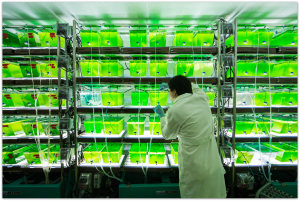 A nanoparticle that can help clean water of cadmium becomes toxic once taking in the metal. But research finds that organic matter, in this case from algae, reduces that toxicity.
A nanoparticle that can help clean water of cadmium becomes toxic once taking in the metal. But research finds that organic matter, in this case from algae, reduces that toxicity.
Nanotechnology plays an important role in removing toxic chemicals found in the soil. Currently more than 70 Environmental Protection Agency (EPA) Superfund sites are using or testing nanoparticles to remove or degrade environmental contaminants. One of these—nano-zero-valent iron—is widely used, though its effect on organisms has not been examined.
In a recent experiment, a team of scientists tested the effect of sulfurized nano-zero-valent iron (FeSSi) on a common freshwater alga Chlamydomonas reinhardtii). They found that FeSSi picked up cadmium from a watery medium and alleviated cadmium toxicity to that alga for more than a month.



